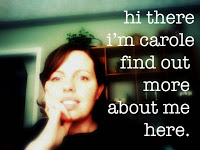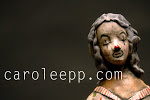by Carole Epp | Apr 2, 2011 | Uncategorized

American curator, writer and historian, Vicki Halper is visiting Australia in April from 1 – 21 April 2011. Craft Australia is bringing her to Australia because of her expert knowledge of contemporary craft and visual arts practice. This was the basis of her recent book, Choosing Craft: A History Told by Artists, which describes the influences that have shaped American craft through the writings of the artists.
Throughout her tour, Vicki will be giving talks about Choosing Craft, her focus will be on the roles of tradition and innovation within current craft practice. This includes her perspectives on the relationships between craft and design in industry and the historical foundations for this way of working. Vicki proposes to talk about these themes in her lectures. She is also interested in doing critique sessions with the students at the art schools in the universities she will be visiting. The other significant part of the tour is meeting some of the key makers and emerging artists in their studios. Proposed visits
Proposed talks:
More info here.
by Carole Epp | Apr 2, 2011 | Uncategorized

Below is from the Milwaukee Art Museum website.
What is contemporary craft? Craft theory from the late nineteenth century and throughout the twentieth century valued the artisan’s hand over the work of the machine. Thus, historically, the artisan has represented an important social virtue. The New Materiality: Digital Dialogues at the Boundaries of Contemporary Craft presents the work of sixteen emerging and established American craft artists who blend traditional craft materials such as fabric, glass, wood, metal, and clay with digital technologies and, in turn, blur the boundaries between the traditionally established categories of craft, art, and design. Works in the exhibition range from an eleven-foot portrait of Madam CJ Walker made out of combs to glass reliquaries containing videos of extinct objects such as encyclopedias and typewriters. One of the largest pieces, Donald Fortescue and Lawrence LaBianca’s Sounding (2008), explores the relationship between not only craft, art, and design, but also technology and nature. Inspired by Herman Melville’s Moby Dick, the artists lowered a cabriole-legged table into the ocean, together with a hydrophone to record the ambient sound, and kept it there for two months. The work is exhibited with an oversized hornlike funnel, tied together with zip ties, to amplify the recorded sound. ”The New Materiality shows us that the lines between art, design, and craft are becoming more porous as each co-opts various theoretical, technical, and philosophical aspects of the other, asking us to scrutinize the distance between them in contemporary creative practice,“ said Fo Wilson, University of Wisconsin-Milwaukee professor and curator of The New Materiality. Also represented in the exhibition are Brian Boldon, Shaun Bullens, Sonya Clark, Lia Cook, E.G. Crichton, Maaike Evers, Wendy Maruyama, Christy Matson, Cat Mazza, Nathalie Miebach, Mike Simonian, Tim Tate, Susan Working, and Mark Zirpel. The New Materiality: Digital Dialogues at the Boundaries of Contemporary Craft is organized by the Fuller Craft Museum and is organized at the Milwaukee Art Museum by the Chipstone Foundation. It is curated by Fo Wilson, assistant professor in the Department of Art and Design at the University of Wisconsin-Milwaukee.
by Carole Epp | Apr 1, 2011 | Uncategorized

On exhibit from April 23 through June 25, 2011.
This modish and very chic exhibition places the work of world-famous designer, Eva Zeisel (born in 1906), side by side with contemporary ceramic designers such as David Pier, Heather Mae Erickson, Peter Saenger, Shawn Spangler, Hiroe Hanazono, Mia Mulvey, Karen Swyler, Marek Cecula, Klein Reid and many others who favor a minimalist aesthetic, producing clean, simplistic forms, organic curves and orderly compositions that reference nature by design. The emphasis of producing limited edition multiples through the use of molds, yields an expression that relates to the mid-century modern design movement and pays tribute to the Scandinavian architectural model influenced by the Bauhaus style. In Ceramics: Post-digital Design, each artist presents a unique perspective with their own ceramic processes and designs that continue a dialogue examining the future concepts in ceramic art. Because technology is continually advancing, we question, how far we can go? What will the future of industry, commerce and even art be like? New technology brings new advancements with a multitude of opportunities and ideas, but we question if there will be a point where the human footprint will be lost, or if we will return to traditional methods for creating and communicating due to our communal nature. Ostensibly, the future holds a hybridization of all the above; as technology grows, humans evolve, and societal networks change, art is expressed in new powerful ways. The idea of a “Post-Digital Age” is upon us, and many art historians believe therein lies the future of art. Artist and educator Mel Alexenberg, author of The Future of Art in a Post-Digital Age, writes about new emerging art forms that “address the humanization of digital technologies” and explores post-digital perspectives that are “rising from creative encounters among art, science, technology, and human consciousness.” Although the fundamentals of ceramics are rooted in traditional use, concepts and designs have evolved to keep up with a continually advancing aesthetic. Technology has not only transcended the process in which ceramics can be made and modified, but it has also transcended the way artists conceptualize their artwork. AMOCA’s exhibition, Ceramics: Post-Digital Design exhibits the very principals of Alexenberg’s thesis, that artists, no matter what medium, are making “interactive and collaborative forms, resulting in a fusion of spiritual and technological realms.” American Museum of Ceramic Art 340 S. Garey Ave, Pomona, CA 91766
(909)865-3146
Fax (909) 629-1067
[email protected]
www.ceramicmuseum.org










